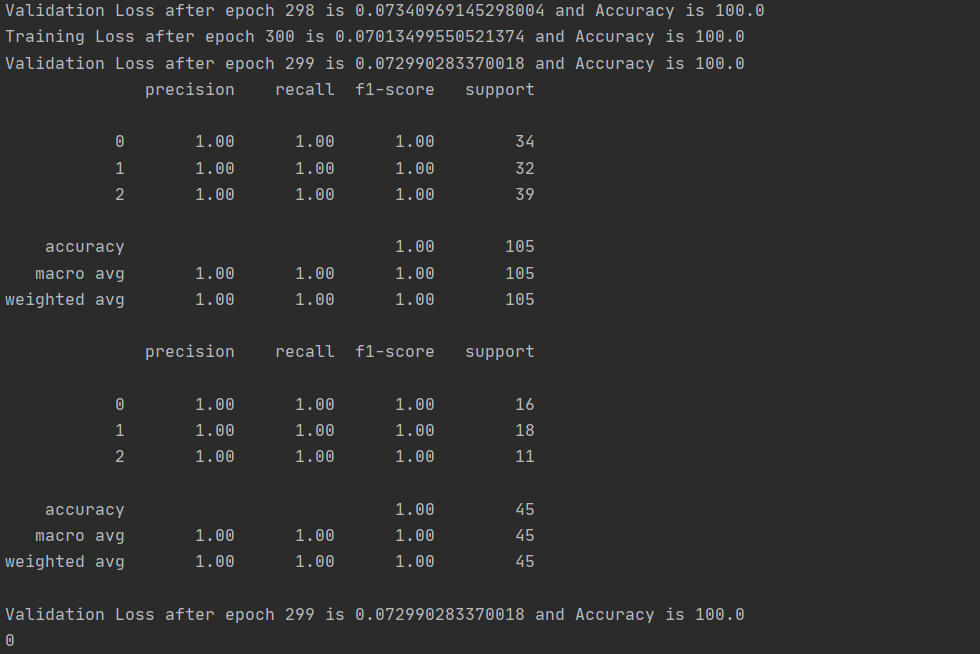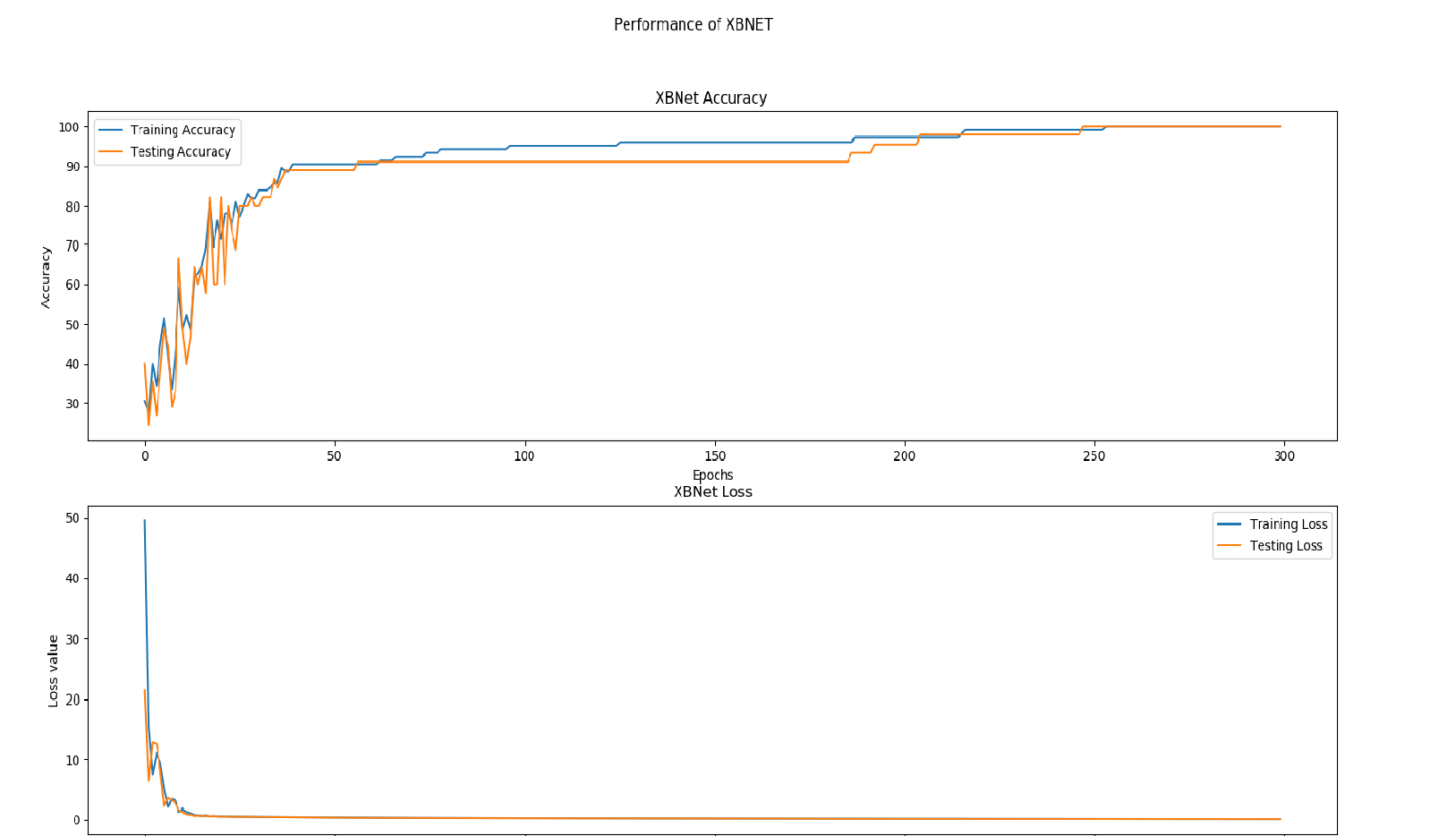XBNet is an open source project which is built with PyTorch that works as a Boosted neural network for tabular data
Project description
XBNet - Xtremely Boosted Network
Boosted neural network for tabular data
XBNET that is built on PyTorch combines tree-based models with neural networks to create a robust architecture that is trained by using a novel optimization technique, Boosted Gradient Descent for Tabular Data which increases its interpretability and performance. Boosted Gradient Descent is initialized with the feature importance of a gradient boosted tree, and it updates the weights of each layer in the neural network in two steps:
- Update weights by gradient descent.
- Update weights by using feature importance of a gradient boosted tree in every intermediate layer.
Features
- Better performance, training stability and interpretability for tabular data.
- Easy to implement with rapid prototyping capabilities
- Minimum Code requirements for creating any neural network with or without boosting
Comparison with XGBOOST
XBNET VS XGBOOST testing accuracy on different datasets with no hyperparameter tuning
| Dataset | XBNET | XGBOOST |
|---|---|---|
| Iris | 100 | 97.7 |
| Breast Cancer | 96.49 | 96.47 |
| Diabetes | 78.78 | 77.48 |
| Titanic | 79.85 | 80.5 |
| German Credit | 71.33 | 77.66 |
Installation :
pip install --upgrade git+https://github.com/tusharsarkar3/XBNet.git
Example for using
import torch
import numpy as np
import pandas as pd
from sklearn.preprocessing import LabelEncoder
from sklearn.model_selection import train_test_split
from XBNet.training_utils import training,predict
from XBNet.models import XBNETClassifier
from XBNet.run import run_XBNET
data = pd.read_csv('test\Iris (1).csv')
print(data.shape)
x_data = data[data.columns[:-1]]
print(x_data.shape)
y_data = data[data.columns[-1]]
le = LabelEncoder()
y_data = np.array(le.fit_transform(y_data))
print(le.classes_)
X_train,X_test,y_train,y_test = train_test_split(x_data.to_numpy(),y_data,test_size = 0.3,random_state = 0)
model = XBNETClassifier(X_train,y_train,2)
criterion = torch.nn.CrossEntropyLoss()
optimizer = torch.optim.Adam(model.parameters(), lr=0.01)
m,acc, lo, val_ac, val_lo = run_XBNET(X_train,X_test,y_train,y_test,model,criterion,optimizer,32,300)
print(predict(m,x_data.to_numpy()[0,:]))
Output images
Reference
If you make use of this software for your work, we would appreciate it if you would cite us:
@misc{sarkar2021xbnet,
title={XBNet : An Extremely Boosted Neural Network},
author={Tushar Sarkar},
year={2021},
eprint={2106.05239},
archivePrefix={arXiv},
primaryClass={cs.LG}
}
Features to be added :
- Metrics for different requirements
- Addition of some other types of layers
Project details
Release history Release notifications | RSS feed
Download files
Download the file for your platform. If you're not sure which to choose, learn more about installing packages.
Source Distributions
Built Distribution
File details
Details for the file XBNet-1.4.2-py3-none-any.whl.
File metadata
- Download URL: XBNet-1.4.2-py3-none-any.whl
- Upload date:
- Size: 13.2 kB
- Tags: Python 3
- Uploaded using Trusted Publishing? No
- Uploaded via: twine/3.4.1 importlib_metadata/3.3.0 pkginfo/1.5.0.1 requests/2.26.0 requests-toolbelt/0.9.1 tqdm/4.61.2 CPython/3.7.6
File hashes
| Algorithm | Hash digest | |
|---|---|---|
| SHA256 | 1b802240a931763dfe58acb6bd76c957facebecb1a3bfc94ad51e11e3e0cb49c |
|
| MD5 | 0f848b185b96b3ff726ca32b5a04fb4b |
|
| BLAKE2b-256 | ee65861e22d7b8cdc870ec05866c2be0393afcdef61195725d0cd2d0090a2e95 |



















